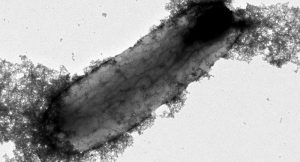
A novel system for metal catalysed cross-coupling reactions using biogenic metal nanoparticles (BNP’s) and nanomicellar surfactants. The system overcomes the limitations of BNP’s to enable highly efficient carbon coupling reactions in water and under mild conditions.
Application
Development Status
IP Status
Commercial Offering
Opportunity
Carbon coupling reactions are some of the most widely used chemical reactions used in pharmaceutical, agricultural and engineering industries. These are predominantly metal catalysed reactions and are usually carried out in volatile organic solvents at high temperatures. The development of metal catalysts systems capable of functioning under mild conditions would be a significant breakthrough towards a more sustainable chemical industry. Biogenic nanoparticles (BNP’s) present opportunities to recover and recycle rare metals required for the catalysis of carbon coupling reactions, and to overcome isssues with the manufacture of traditional metal catalysts, but they typically exhibit low levels of catalysis under mild conditions. This new technology combines the use of BNP’s with designer
surfactants to deliver a catalyst system that supports highly efficient metal catalysed crosscoupling and hydrogenation in water and under mild conditions. We are now seeking a partner for licensing and commercialisation.
Technology Overview
This novel catalyst system uses metal nanoparticles produced by the bacterium Desulfovibrio alaskensis. These biogenic metal nanoparticles (BNP’s) are highly active catalysts for metalcatalysed cross-coupling reactions, outperforming commercially available catalysts and other biologically-supported metal nanoparticles. The catalytic activity of these nanoparticles is greatly enhanced by the use of biocompatible nanomicellar surfactants, enabling efficient cross-coupling reactions in water at 37 °C. Moreover, the benign nature of the catalyst system enables bi-functional catalysisin cascade systems incorporating the biohydrogenation of crosscoupling products. The heterogenous nanoparticle catalysts can be recovered from reactions using centrifugation and regenerated using bacteria.
Benefits
Publications
Y. Era, J. A. Dennis, L. E. Horsfall, S. Wallace, “Palladium Nanoparticles from Desulfovibrio alaskensis G20 Catalyze Biocompatible Sonogashira and Biohydrogenation Cascades”, JACS Au, 2022, https://doi.org/10.1021/jacsau...
Y. Era, J. A. Dennis, S. Wallace, L. E. Horsfall, “Micellar catalysis of the Suzuki Miyaura reaction
using biogenic Pd nanoparticles from Desulfovibrio alaskensis”, RSC Green Chemistry, 2021,
https://doi.org/10.1039/D1GC02...

Technology Transfer Manager
School of Biological Sciences
The Roslin Institute
College of Veterinary Medicine